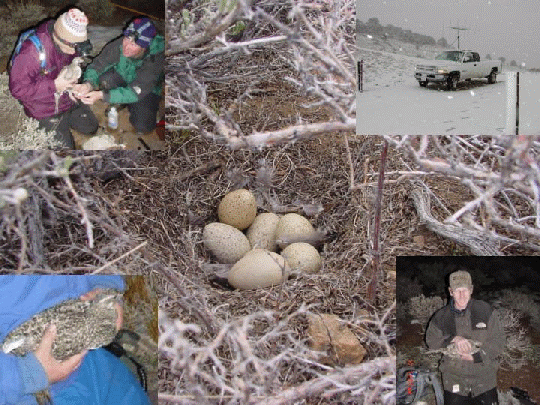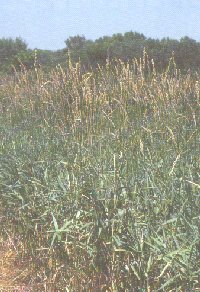- Home
- About S&T
- Taxa/Organisms
- Ecosystems
- Issues
- Methods & Tools
- Reports & Publications
- Location
- Search
November 2007 | Publisher: USGS | Format: .PDF
biology.usgs.gov — The greater sage-grouse (Centrocercus urophasianus) and the Gunnison sage-grouse (C. minimus) are species of concern because of their population declines and shrinking geographic distributions. Of continuing interest is the question of population abundance and trends. This publication answers the questions that deal with sage-grouse population, More...

1999 | Publisher: USGS | Science Center: Fort Collins Science Center (FORT, Ft. Collins) | Format: URL
www.fort.usgs.gov — A quasi-experimental situation exists in Rocky Mountain National Park, where elk (Cervus elaphus) populations have increased 3-fold since 1968 following their release from artificial controls within the park. Increases in elk habitat use and decreases in deer habitat use were observed. Significant increases in cover of mosses and lichens occurred More...

Publisher: USGS | Science Center: Western Ecological Research Center (WERC, Sacramento) | Format: URL
www.werc.usgs.gov — The sage grouse that occupies the Mono County area is described as the eastern subspecies of the greater sage-grouse (Centrocercus urophasianus urophasianus). The greater sage-grouse (Centrocercus urophasianus) is found in sagebrush (Artemisia spp.) dominated habitats across western North America. Sage grouse populations have declined dramatically More...

Publisher: USGS | Science Center: Upper Midwest Environmental Sciences Center (UMESC, LaCrosse) | Format: URL
www.umesc.usgs.gov — This resource is a species profile and issue overview of the reed canary grass (Phalaris arundinacea). It discusses its increasingly dominating behavior in wet meadows in the Upper Midwest. Reed canary grass is highly tolerant to flooding, resistant to burning, and quickly forms virtual monocultures by shading native grasses and forbs with its More...

Publisher: USGS | Science Center: Western Ecological Research Center (WERC, Sacramento) | Format: URL
www.werc.usgs.gov — This web resource addresses the positive relationship between cheatgrass (Bromus tectorum) and fire frequency as a major concern for land managers in semi-arid shrublands throughout western North America, particularly in Great Basin sagebrush steppe. Management tools are needed to break this cycle, and in this project we will evaluate the use of More...

Publisher: USGS | Science Center: Forest and Rangeland Ecosystem Science Center (FRESC, Corvallis) | Format: URL
sagemap.wr.usgs.gov — SAGEMAP - Spatial Data for Sage Grouse and Shrubsteppe Systems is needed for research and management of sage grouse and sagebrush steppe habitats in the western United States. This website is a product of the NBII Great Basin Information Project. Find out more from this resource on sage grouse as endangered species, habitat information, More...
